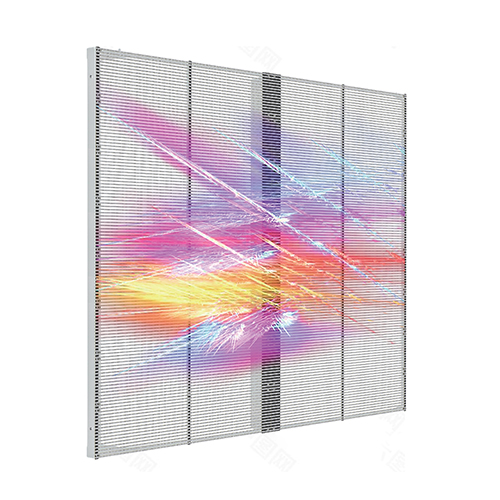NEWS
New Products
What is Indoor LED Screen?
2024-10-28Indoor LED screens have revolutionized the way visual content is presented in various indoor settings, from corporate events and shopping malls to control rooms and entertainment venues. These high-definition display systems use light-emitting diodes (LEDs) to provide bright, vibrant, and dynamic visuals, offering unparalleled clarity and flexibility. So, what exactly is an indoor LED screen, and why is it becoming a staple in modern visual communication?
Definition of an Indoor LED Screen
An indoor LED screen is a type of electronic display that uses a matrix of tiny LED lights to create images, videos, and other digital content. Unlike traditional LCD displays or projectors, LED screens provide higher brightness, better contrast, and superior color accuracy, making them ideal for environments where sharp visuals are essential. Designed specifically for indoor use, these screens are optimized for closer viewing distances and controlled lighting conditions.
Key Features of Indoor LED Screens
1. High Resolution and Clarity
Indoor LED screens are known for their high resolution, which is achieved through small pixel pitch (the distance between individual LEDs). This allows for detailed and crisp images, even when viewed up close. The high-definition visuals are perfect for presentations, product displays, and advertisements that need to capture attention in indoor environments.
2. Brightness and Contrast
While indoor environments typically have controlled lighting, LED screens are capable of delivering outstanding brightness levels, ensuring that content is easily visible from any angle or distance. The contrast ratio of LED screens also ensures that dark and bright colors are well-balanced, offering viewers a visually rich experience.
3. Customizable Size and Shape
Indoor LED screens are modular, meaning they can be scaled to any size or shape by connecting individual panels. Whether it’s a small screen for a boutique store or a massive display for a concert hall, these screens can be customized to fit the space and purpose perfectly.
4. Energy Efficiency
LED technology is known for its energy efficiency. Indoor LED screens consume less power than traditional lighting systems or projection displays, making them not only environmentally friendly but also cost-effective for businesses over time.
5. Wide Viewing Angle
Another significant advantage of indoor LED screens is their wide viewing angle. Viewers can see the content clearly from almost any angle, making it ideal for large gatherings where people are spread across different positions in a room or auditorium.
Applications of Indoor LED Screens
The versatility of indoor LED screens allows them to be used across a variety of industries and environments:
1. Corporate Events and Conferences
In corporate settings, indoor LED screens are used for presentations, product launches, and keynote speeches. Their ability to display dynamic, real-time content in high definition helps enhance engagement and ensures that critical information is effectively communicated to the audience.
2. Retail Stores and Shopping Malls
Retailers use indoor LED screens to showcase product videos, promotions, and brand messaging. The bright, eye-catching visuals help attract customers' attention and create an immersive shopping experience. For example, transparent LED screens are often used in store windows to display ads without obstructing the view of the interior.
3. Control Rooms and Monitoring Centers
Indoor LED screens are crucial in control rooms, where operators need to monitor large amounts of data. The high resolution and scalability of LED screens allow these environments to display multiple data feeds and video streams simultaneously, providing a comprehensive view of operations.
4. Entertainment Venues and Concert Halls
In theaters, concert venues, and sports arenas, indoor LED screens play a vital role in amplifying the audience experience. These screens display live video feeds, interactive graphics, and advertisements, enhancing the overall atmosphere of the event.
5. Museums and Galleries
Indoor LED screens are also used in museums and galleries to display digital art, interactive exhibits, and educational content. Their ability to blend seamlessly into the environment and provide high-quality visuals makes them an excellent tool for enhancing visitor engagement.
Advantages of Indoor LED Screens
1. Seamless Display
Unlike LCD displays, which have visible bezels between panels, LED screens offer a seamless viewing experience with no gaps or interruptions between modules. This makes them ideal for creating large, immersive visual displays.
2. Long Lifespan
LED screens are highly durable and have a longer lifespan compared to other display technologies. With proper maintenance, they can run for thousands of hours, making them a solid long-term investment for businesses.
3. Easy Maintenance
Most indoor LED screens are designed with easy access for maintenance. Should an issue arise with one of the LED modules, it can be easily replaced without dismantling the entire screen, reducing downtime and maintenance costs.
In conclusion, Indoor LED screens are transforming the way visual content is displayed in various indoor environments. With their high-definition visuals, brightness, energy efficiency, and customizable features, they are becoming indispensable tools for communication, entertainment, and engagement. Whether used in retail, corporate settings, or entertainment venues, indoor LED screens offer a powerful way to captivate audiences and enhance the overall experience. As technology continues to advance, we can expect even more innovative applications and improvements in the performance of these versatile display systems.






